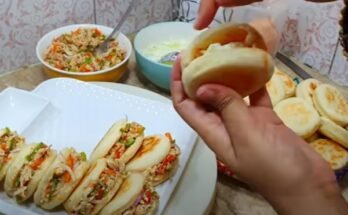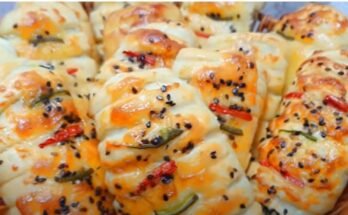As the holy month of Ramadan approaches, Muslims around the world prepare for a time of spiritual reflection, community, and of course, special foods. Among the many delightful treats that grace iftar tables, the patisa (also known as soan papdi) holds a special place. This year, why not elevate your iftar spread with a homemade, commercial-grade “Lachedar Cup Patisa”? This flaky, melt-in-your-mouth sweet is not only a delicious way to break your fast but also a gesture of love and dedication to share with family and friends.
The Significance of Sweets in Ramadan
In many Muslim cultures, breaking the fast with something sweet is considered a sunnah, following the tradition of Prophet Muhammad (peace be upon him). Sweets like patisa not only provide a quick energy boost after a day of fasting but also symbolize the sweetness of faith and the joy of communal iftar gatherings.
Preparing for Your Ramadan Patisa
Before we dive into the recipe, it’s important to note that making patisa requires time and effort. Consider preparing this treat in the evening after iftar or in the early morning before suhoor when you’re not fasting. This way, you can taste-test as you go and ensure your patisa is perfect for the next day’s iftar.
Ingredients for Barkat
In Islamic tradition, there’s a concept of barkat or blessing in abundance. With this in mind, our recipe makes a generous amount of patisa, perfect for sharing with neighbors or donating to your local mosque for community iftars. Here’s what you’ll need:
- Ghee (Clarified Butter): 1.5 kg
- All-Purpose Flour (Maida): 2 kg
- Sugar: 2.5 kg
- Glucose: 750 grams
- Water: 750 grams (3 pao)
- Almonds for garnish
The Blessed Process of Preparation
Step 1: The Foundation – Ghee and Flour
Begin by melting the ghee in a large pot. Once melted, add the flour and roast it patiently. This process, which takes about 10-12 minutes, is reminiscent of the patience we cultivate during Ramadan. Stir continuously until the mixture becomes fluffy and aromatic, setting the foundation for your patisa just as Ramadan sets the foundation for increased taqwa (God-consciousness).
Step 2: The Sweet Rewards – Sugar Syrup
As your flour mixture cools, prepare the sugar syrup. Combine the sugar and water, heating until the sugar dissolves completely. Add the glucose, which prevents crystallization. Cook until the syrup reaches the right consistency – it should form a soft, pliable ball when a small amount is tested between your fingers. This syrup represents the sweet rewards of our fasting and good deeds during Ramadan.
Step 3: Patience in Cooling
Transfer the sugar syrup to a large, open container to cool. This cooling process, much like the gradual breaking of our fast at iftar, requires patience. The syrup should be warm, not hot, when combined with the flour mixture.
Step 4: Striving in Devotion – The Art of Pulling
Now comes the most critical part – pulling the patisa. This labor-intensive process mirrors our striving in devotion during Ramadan. Add the warm syrup to the roasted flour mixture and begin to pull and fold repeatedly. As you work, you’ll see the mixture lightening in color and developing a stringy texture. This process, while demanding, is also meditative – a time to reflect on the blessings of Ramadan as you prepare this special treat for your loved ones.
Step 5: Molding Our Intentions – Shaping and Setting
As Ramadan molds our habits and intentions, we now mold our patisa. Grease your cups or molds lightly with ghee. Carefully fill each mold with the patisa mixture, gently pressing it in. Top each cup with slivered almonds – a nutrient-rich garnish that’s also perfect for suhoor.
A Sweet Beginning to Iftar
After allowing your patisa to set, carefully remove it from the molds. What you have now is a truly special “Lachedar Cup Patisa,” made with your own hands and infused with the blessings of Ramadan.
Imagine the joy of breaking your fast with this homemade delicacy, its flaky layers dissolving on your tongue, providing a moment of blissful gratitude for the blessings of food, family, and faith. Share these cups of patisa with your family at iftar, distribute them to neighbors, or donate them to your local mosque for community iftars – spreading sweetness and strengthening bonds of community, as is the spirit of Ramadan.
Ramadan Reflections
As you enjoy your homemade patisa this Ramadan, take a moment to reflect. Just as it took time, effort, and patience to create this sweet, so too does our spiritual growth during this blessed month require dedication and perseverance. Each flaky layer of the patisa can remind us of the layers of blessings we receive, while its sweet taste can represent the sweetness of faith and community that Ramadan brings.
Remember, the joy of Ramadan lies not just in the breaking of the fast but in the spirit of giving and sharing. Your homemade Lachedar Cup Patisa is more than just a sweet treat – it’s a labor of love, a means of bringing joy to others, and a delicious manifestation of the Ramadan spirit.
May your days of fasting be easy, your iftars joyous, and your Ramadan filled with blessings. Ramadan Kareem!



